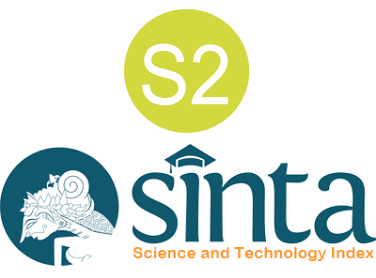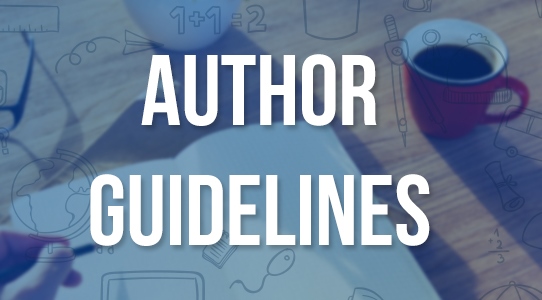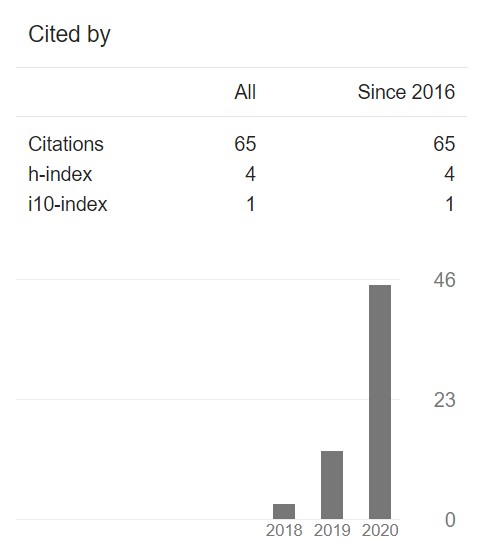English Materials Development Oriented to Left and Right Brains Accommodation for Senior High School
DOI:
https://doi.org/10.37680/qalamuna.v16i2.5061Keywords:
Brains Accommodation, English Materials Development, English LearningAbstract
This research aims to analyze the development of left and right brain accommodation-oriented English language material for high school. This study applied Research and Development research design to general the English material whole accommodated the right brain and left brain. This study voluntarily involved the tent grade students at SMA Negeri 7 Yogyakarta who consisted of 89 students to fill in the questionnaire which dealt with target needs and learning needs. The materials development approach used in this research was based on The Dick and Carey model which included conducting a needs analysis, designing syllabus, developing the draft of the materials, validating the English materials from experts, and doing try-out. The result of the study shows that the developed English materials are appropriate for the students referring to the experts’ responses to the questionnaire with the average score from expert judgement 1 is 3.68, and from expert judgement 2 is 3.67. This is supported by students’ responses to the questionnaire with average score 3.05. This suggests that the English materials facilitate students to accommodate both sides of their brain.
Downloads
References
Aimen, A., & Khadim, U. (2024). Significance of Proficiency in the English Language within the Realm of Education in Pakistan. English Education Journal, 15(1), 1–8. https://doi.org/10.24815/eej.v15i1.34863
Alviaderi Novianti, Martina Mulyani, Indra Sudrajat, & Retno Wiyati. (2022). Pentingnya Bahasa Inggris di Era Globalisasi: Edukasi pada siswa/i SMK. Aksararaga, 4(2), 72–75. https://doi.org/10.37742/aksararaga.v4i2.67
Anak Agung Jagadhita Ari Geria. (2022). cit2_Challenges Faced Students in Speaking English in Indonesia: A Literature Study. Challenges Faced Students in Speaking English in Indonesia: A Literature Study, Nomor 2 20, 1–4.
Anderson, T., & Shattuck, J. (2012). Design-based research: A decade of progress in education research? Educational Researcher, 41(1), 16–25.
Arends, R. I., & Kilcher, A. (2010). Teaching for student learning: Becoming an accomplished teacher. In Teaching for Student Learning: Becoming an Accomplished Teacher. https://doi.org/10.4324/9780203866771
Asari, Andi; Pali, Agustina; Amelia, Winda; Kurniadi, Yudi;Muhafid, Ervian Arif; Sari, Dhesi Wulan; Fitriani, Rani Ligar; Komala, Siti; Pramesti, Puji; Septianasari, Lina; Arianto, Tomi; Hasyim, Fuad; Parayil, S. N. (2023). Strategi Pembelajaran Bahasa Inggris (Issue May).
Buzan, T. (1984). Use Your Memory. pdf.
Dwivedi, Y. K., Kshetri, N., Hughes, L., Slade, E. L., Jeyaraj, A., Kar, A. K., Baabdullah, A. M., Koohang, A., Raghavan, V., Ahuja, M., Albanna, H., Albashrawi, M. A., Al-Busaidi, A. S., Balakrishnan, J., Barlette, Y., Basu, S., Bose, I., Brooks, L., Buhalis, D., … Wright, R. (2023). “So what if ChatGPT wrote it?” Multidisciplinary perspectives on opportunities, challenges and implications of generative conversational AI for research, practice and policy. International Journal of Information Management, 71(March). https://doi.org/10.1016/j.ijinfomgt.2023.102642
El-Henawy, W. (2020). Examining the Impact of Brain-Based Professional Development on EFL Novice Teachers’ Pedagogical Perceptions and Practices. Journal of Scientific Research in Education, July. https://jsre.journals.ekb.eg/article_107636.html?lang=en
Gailea, N., & Indasari, I. (2023). Materials Selection in Teaching English Skills for Teachers of Senior High School in Serang City. 90 | Jelts, 1(2), 90–102.
Harlina, H., & Yusuf, F. N. (2020). Tantangan Belajar Bahasa Inggris di Sekolah Pedesaan. Jurnal Penelitian Pendidikan, 20(3), 325–334. https://doi.org/10.17509/jpp.v20i3.28191
Hendrizal. (2020). Rendahnya Motivasi Belajar Siswa Dalam Proses Pembelajaran. Jurnal Riset Pendidikan Dasar Dan Karakter, 2(1), 44–53. https://ojs.adzkia.ac.id/index.php/pdk/article/view/57/48
Herdiyanti, R., & Assery, S. (2021). Pengaruh Kepemimpinan Dan Lingkungan Kerja Terhadap Kinerja Karyawan Dengan Dimediasi Oleh Kedisiplinan Pada Sekolah Tinggi Teknologi Kedirgantaraan. Jurnal Riset Akuntansi Dan Bisnis Indonesia, 1(1), 171–189. https://doi.org/10.32477/jrabi.v1i1.xxx
Ho, W. K., & Wong, R. Y. L. (2002). English language teaching in East Asia today: Changing policies and practices. (No Title). https://doi.org/10.1016/j.sbspro.2011.03.320
Howard, J., & Major, J. (2015). Guidelines for Designing Effective English Language Teaching Materials Why English Language Teachers May Choose to Design their own Materials. January 2004, 101–109.
Jusuf, H., Fatsah, H., & Dako, R. T. (2021). Students’ Performance in Speaking English (A Case Study on Students’ Poor Performance in Speaking English). Jurnal Normalita, 9(2), 303–322.
Kristiawan, M. (2019). Analisis Pengembangan Kurikulum dan Pembelajaran. In UPP FKIP Univ. Bengkulu (Issue February).
Lestariningsih, F. E., Susyetina, A., & Krisnawati, L. D. (2016). Developing English Instructional Materials for the. 11(4), 261–269.
Long, M. H. (1990). The least a second language acquisition theory needs to explain. TESOL Quarterly, 24(4), 649–666
Lustig, M. W., & Koester, J. (2010). Intercultural competence: Interpersonal communication across cultures. Pearson. https://thuvienso.hoasen.edu.vn/handle/123456789/10464
Maduw, B. (2020). PENTINGNYA PEMBELAJARAN BAHASA INGGRIS DI SEKOLAH. Warta Edisi, May, 31–48.
McGrath, B. P., & Holmes, D. G. (2002). Multicarrier PWM strategies for multilevel inverters. IEEE Transactions on Industrial Electronics, 49(4), 858–867. https://doi.org/10.1109/TIE.2002.801073
McLaughlin, B. (2013). Second language acquisition in childhood: Volume 2: School-age Children. Psychology Press. https://doi.org/10.4324/9780203726341
Mufidah, L. luk N. (2017). 276698-Memahami-Gaya-Belajar-Untuk-Meningkatkan-7924C83a (1). In Jurnal Perempuan dan Anak (Vol. 1, Issue 2, pp. 245–260).
Mulyatiningsih, E. (2011). Analisis Model-Model Pendidikan Karakter Untuk Usia Anak-Anak, Remaja Dan Dewasa. Yogyakarta: UNY, Dari Http://Staff. Uny. Ac. Id/Sites/Default/Files/Penelitian/Dra-Endang-Mulyatiningsih,-M. Pd./13B_Analisis-Model-Pendidikan-Karakter. Pdf, Diakses Pada, 8.
Nufus, T. Z. (2018). Teaching English to young learners in Indonesia (Pros and Cons). English Language in Focus (ELIF), 1(1), 65–70. https://doi.org/10.24853/elif.1.1.65-70
Nurhaliza Putri Sabila, & Siti Quratul Ain. (2023). Peran Guru Sebagai Fasilitator Dalam Menumbuhkan Minat Membaca Siswa Kelas Ii Sdn 177 Pekanbaru. Didaktik : Jurnal Ilmiah PGSD STKIP Subang, 9(2), 5953–5964. https://doi.org/10.36989/didaktik.v9i2.1384
Patricia Diane Mouboua, Fadeke Adeola Atobatele, & Olateju Temitope Akintayo. (2024). Language as a tool for intercultural understanding: Multilingual approaches in global citizenship education. Magna Scientia Advanced Research and Reviews, 11(1), 019–030. https://doi.org/10.30574/msarr.2024.11.1.0071
Plomp, T., & Nieveen, N. (2007). An introduction to educational design research.
Samsudin, M. (2020). Faktor-Faktor yang Memengaruhi Belajar. Eduprof : Islamic Education Journal, 2(2), 162–186. https://doi.org/10.47453/eduprof.v2i2.38
Siregar, N., Harahap, Y. S., & ... (2021). Hasil Belajar Bahasa Inggris Siswa Yang Memiliki Stifin Berbeda Dengan Menggunakan Learning Scientific Approach. Prosiding Seminar …, 1. https://www.e-prosiding.umnaw.ac.id/index.php/penelitian/article/view/755
SUHARDIANA, I. P. A. (2019). Peran Teknologi Dalam Mendukung Pembelajaran Bahasa Inggris Di Sekolah Dasar. Adi Widya: Jurnal Pendidikan Dasar, 4(1), 92. https://doi.org/10.25078/aw.v4i1.934
Sukič Kuzma, M. (2022). English As the Language of Science. Gamtamokslinis Ugdymas / Natural Science Education, 19(2), 66–81. https://doi.org/10.48127/gu-nse/22.19.66
Surahman, A. (2007). Earthquake‐resistant structural design through energy demand and capacity. Earthquake Engineering & Structural Dynamics, 36(14), 2099–2117. https://doi.org/10.1002/eqe.718
Susanthi, I. G. A. A. D. (2020). Kendala dalam Belajar Bahasa Inggris dan Cara Mengatasinya. Linguistic Community Services Journal, 1(2), 64–70. https://doi.org/10.55637/licosjournal.1.2.2658.64-70
Suwarsih, M. (2013). Metodologi Pengajaran Bahasa. Yogyakarta: UNY Pres.
Wahab, I., & Nuraeni, N. (2020). the Analysis of Students’ Learning Style. Seltics, 3(1), 41–46. https://doi.org/10.46918/seltics.v3i1.509
Wahyuningsih, B. Y., & Sunni, M. A. (2020). Efektifitas Penggunaan Otak Kanan dan Otak Kiri terhadap Pencapaian Hasil Belajar Mahasiswa. Palapa, 8(2), 351–368. https://doi.org/10.36088/palapa.v8i2.885
Wardah. (2020). Di Perguruan Tinggi Islam Dalam Konteks Esp ( English for Spesific Purpose ). 205–218.
Widagdo, A. (2021). Pengajaran Pengucapan Kata Bahasa Inggris: Tantangan Mengajar Efl Di Negara Yang Tidak Berbahasa Inggris. Jurnal Kreatif: Jurnal Kependidikan Dasar, 12(1), 224–233. https://garuda.kemdikbud.go.id/documents/detail/2317461
Widiana, I. W., Bayu, G. W., & Jayanta, I. N. L. (2017). Pembelajaran Berbasis Otak (Brain Based Learning), Gaya Kognitif Kemampuan Berpikir Kreatif Dan Hasil Belajar Mahasiswa. JPI (Jurnal Pendidikan Indonesia), 6(1), 1–15. https://doi.org/10.23887/jpi-undiksha.v6i1.8562
Downloads
Published
How to Cite
Issue
Section
License
Authors who submit manuscript retain its copyright and grant publisher right of first publication licensed under a Creative Commons Attribution-ShareAlike 4.0 International License (CC BY-SA 4.0) that allows others to access (search, read, download, and cite), share (copy and redistribute the material in any medium or format) and adapt (remix, transform, and build upon any material) the work for any lawful purpose, even commercially with an acknowledgement of the work's authorship and initial publication in Qalamuna: Jurnal Pendidikan, Sosial, dan Agama.












